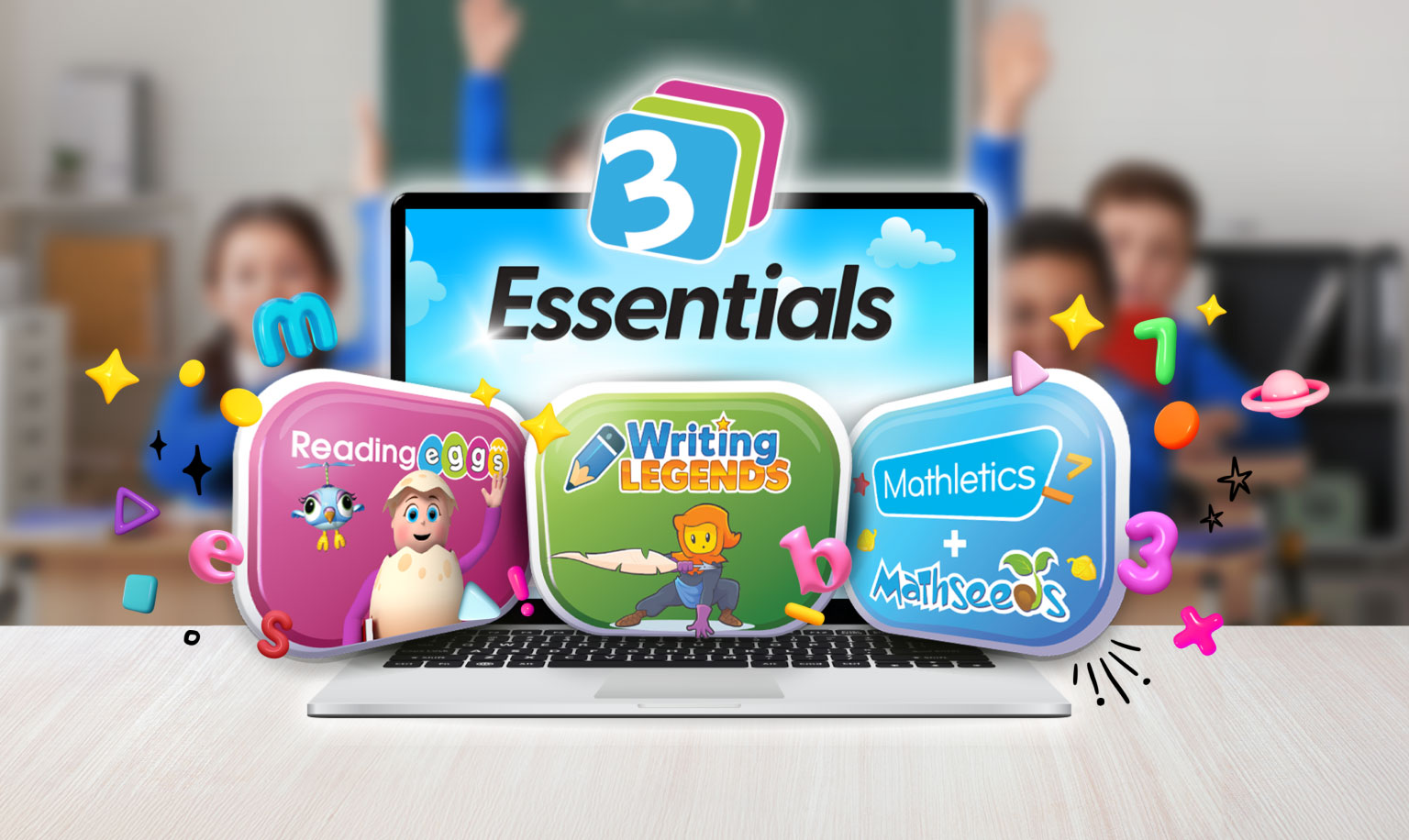
For the past month, most accidental distance teachers have had their hands full just trying to stay connected with students. But with many schools still uncertain about when their doors will fully reopen, the need to actually assess student learning is becoming more pressing.
Before you take your red pen to an inbox full of clunky worksheets, consider these 8 online assessment strategies for powerful insights without the paperwork. You’ll close the learning loop and save precious time.
Peer assessment
Constructive peer feedback helps students learn while providing you with formative insights into the progress of all involved. Model what helpful feedback looks like, and then monitor the comments each student receives to stay informed of individual progress. It’s much easier than providing written feedback for every student yourself.
Peer feedback can be conducted online via a discussion board where students post their work, or a synchronous tool (e.g. Skype or Zoom) where students discuss each other’s work in real time. Many of your students will already be connected via social media, so encourage them to share work on these platforms too.
Tips
- Provide exemplars of feedback that is specific, constructive and detailed.
- Partner students carefully if you are concerned about the integrity of peer feedback. Alternatively, you could choose to make it anonymous.
- Make sure peer feedback takes a written form so that you can access it. Student feedback is often more considered when committed to writing as well.
- Use the feedback itself as a formative assessment of the student providing that feedback. If they struggle to articulate their thoughts or identify significant aspects of a peer’s work, then they are likely to have their own gaps in understanding.
Independent projects
Project-based assessments translate seamlessly to distance education because they revolve around independent inquiry. They also produce a single, substantial piece of work that assesses across multiple criteria as opposed to just one or two.
You can base a project around a research topic, problem-solving activity, a creative activity, or a mix of different learning opportunities. For example, task students with researching a real-world problem that links to your studied content and then have them design a creative solution based on what they have learned. Team this with a reflection and you have an assessment that is rich with learning opportunities along the way.
Tips
- Scaffold each section of the task (e.g. brainstorming, researching, creating) with clear a clear model.
- Set aside plenty of time. Project-based learning is rich, but it cannot be rushed.
- Use this as an opportunity to teach students web research skills: searching, finding credible sources and referencing.
- Schedule regular check-ins where students provide a progress update, but step out of the way to allow for independent learning.
- Set clear submission requirements: deadline, file type, and destination.
Jigsaw projects
Individual projects can be transformed into collaborative ones using the jigsaw approach. You’ll be able to assess students’ teamwork abilities while lightening your marking load.
Group students with a shared project but assign them different roles which they must put together to generate a final product. These roles might see students take responsibility for different areas of research, or different components of the final product.
Tips
- You can let students assign their own roles within the group. Just ensure that you know the responsibility of each student.
- Provide individual marks for each member of the group but save time by writing a single piece of detailed feedback for the group as a whole.
Self-assessment
A students’ reflection on their own learning reveals their understanding and precisely locates the gaps and difficulties that need intervention. Self-assessment is invaluable in online environments where you do not get to see student learning in action.
Ease students into the process of self-assessment with a simple Google Forms survey or questionnaire. This can then develop into more extended written reflections or the use of a self-assessment rubric. Students could also record verbal statements or include reflective captions as part of a portfolio.
Tips
- Productive self-assessment takes time to master. Make it a regular activity.
- Model the language and self-questioning used to generate productive reflection.
- Reward integrity and honesty.
- Use self-assessments to inform one-on-one discussion with a student or parental conversations.
- Keep a record of student self-assessments. These can be used to help students chart their own progress.
- Scaffold the process carefully. Provide a structured resource with prompts if students are writing an extended reflection.
Learning journals
Journals, where students write regularly about their own learning, will provide you with a constant source of formative assessment. It also builds students’ metacognitive abilities –their ability to ‘think about thinking’.
Online learning journals can be as simple as a Word document. You can also use free blogging platforms (e.g. Live Journal or Blogger), video diaries or voice recordings for greater interactivity and engagement.
Learning journals can be freeform or you might encourage students to reflect on specific aspects of their progress. Here are some examples:
- Challenge journals: Reflect on any challenges experienced during the week’s learning and plan strategies for improvement.
- Success journals: Reflect on the high points of the week’s learning. New concepts understood, interesting pieces of knowledge gained and problems overcome.
- Visual diaries: Students can use Paint or a simple digital illustrator to draw or doodle something inspired by the week’s learning.
- Question journals: Students write three questions each day to inform future learning or independent inquiry.
You can find many more examples here.
Tips
- Plan a platform where learning journals are visible to you alone if students are hesitant to share with their peers.
- Use journal entries to inform future learning activities for individuals.
- Model the reflection process for journal writing. Self-questioning (“What interested me most?”, “What part did I find hardest?”) is an effective way of encouraging deeper reflection.
Portfolios
Portfolios are a perfect assessment tool for distance education, with many schools having already adopted digital portfolios in place of the old filing system.
Use your LMS to set up a designated portfolio space for each student. Alternatively, you could use cloud software such as OneNote or Google Classroom. Dedicated portfolio platforms such as Seesaw are also available. Students can use this space to upload select pieces of work for assessment.
The ongoing nature of a student portfolio means that it can be used as both a formative and summative assessment. You can check student progress at any time by accessing their portfolio work and formally assess the final product at the conclusion of a learning unit.
Tips
- Set a goal for your students’ portfolios. What specific learning do you want to see displayed?
- Decide whether you want your students’ portfolios to demonstrate mastery or progress. This will determine what pieces of work should be included.
- Instruct students to include set pieces of work, but also let them choose some of their own. This will give them ownership over their portfolio and prompt self-reflection.
- Encourage reflection as part of the portfolio. For example, each work piece could be accompanied by a caption where the student explains why they chose to include it.
Video presentations and podcasts
Oral assessments function even more effectively online than they do in the classroom. The lack of a visible audience reduces anxiety and you have the opportunity to revisit their speaking as many times as you need in the form of a recording.
You can also encourage students to make use of multimedia components for more engaging presentations. The ‘record’ function on MS PowerPoint makes it easy for students to combine voice with a slide presentation and tech-savvy students might like to experiment with editing software.
You will be surprised what they have the capacity to produce!
Podcasts are a substitute for standard oral presentations. Consider grouping students together as a ‘panel’ to encourage dynamic discussion, as opposed to scripted monologues.
Tips
- Coach students on the basics of online verbal communication, such as speaking clearly and into a microphone.
- Have students do a test submission of their files so that they can troubleshoot any uploading issues.
- If you have the capacity, students could do live presentations to their peers over Zoom, Teams or Skype. They can also share their screens on these platforms.
- Remember to put the emphasis on the content of their presentation. Engaging multimedia should take the place of good verbal expression and information
Online discussion
Unlike classroom discussion, student comments on online message boards can be read as many times as you need to make an informed assessment of learning. Students also have time to post detailed and considered responses that you would not ordinarily get in a live setting.
Online discussion can also be factored into a summative assessment if you clearly specify the criteria being addressed. You might use it to assess a student’s content knowledge, written communication, participation, collaboration or ability to make connections.
Tips
- Set a protocol for online discussion which briefs students on respectful and effective communication strategies.
- Promote quality contributions to online discussion as opposed to quantity. Specifying a certain amount of responses invites superficiality.
- Monitor and facilitate online discussions with leading questions and prompts.
Trust your judgement
Remember that your professional judgement is always enough to reliably assess student learning. Don’t feel the need to bring cumbersome testing methods into online teaching in an attempt to maintain control. Experiment with new strategies, get creative and – most importantly – trust yourself. You might change your whole approach to assessment in the process.











